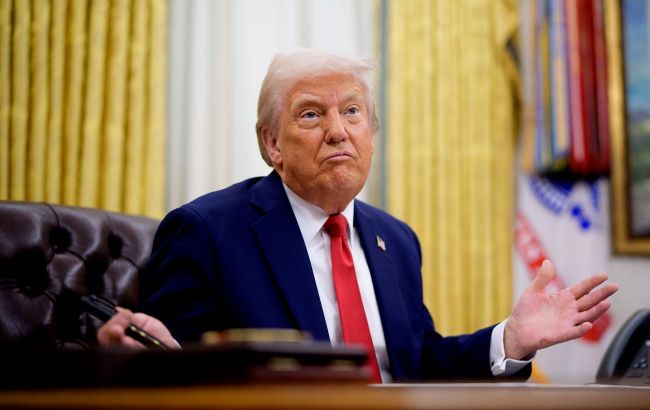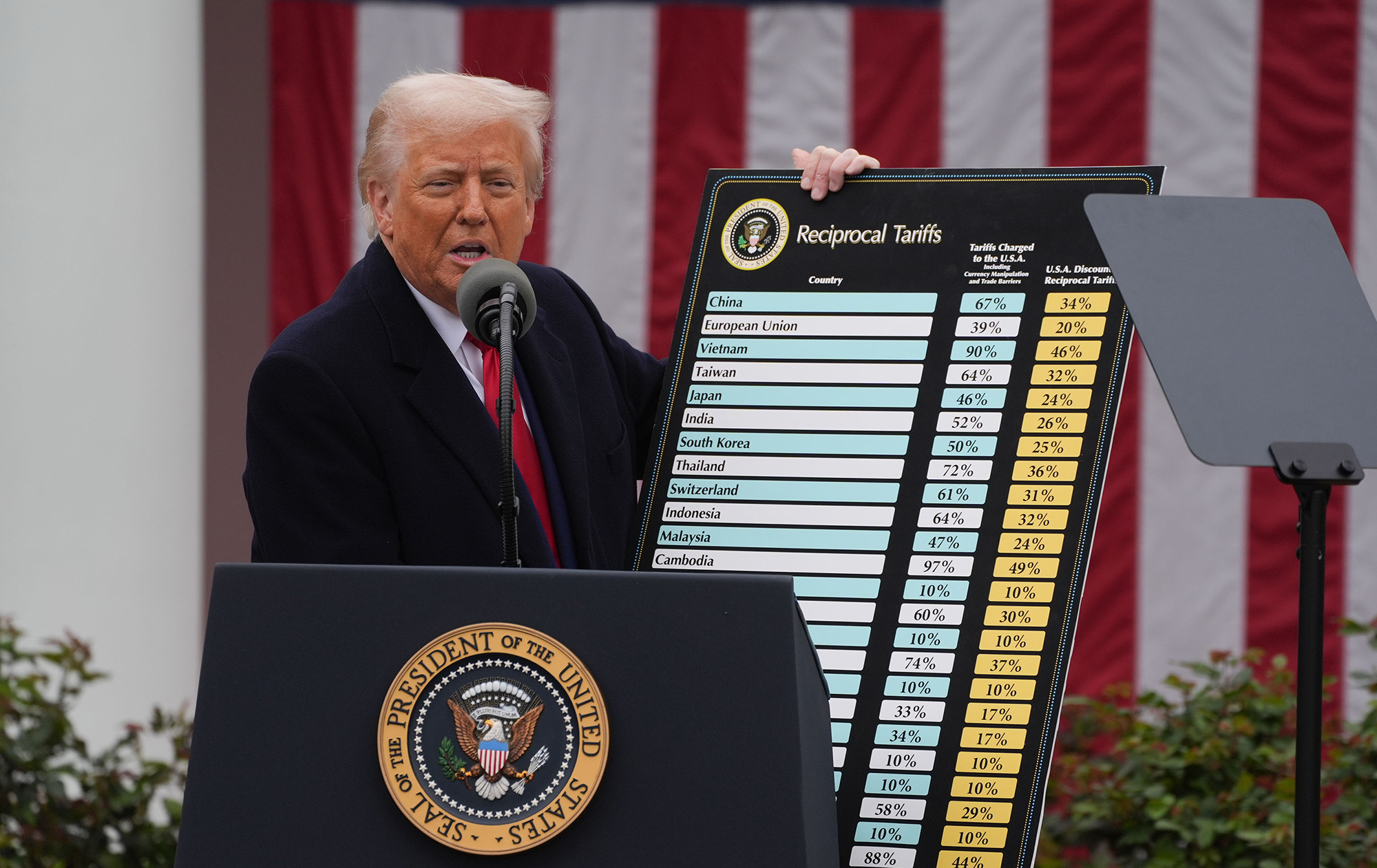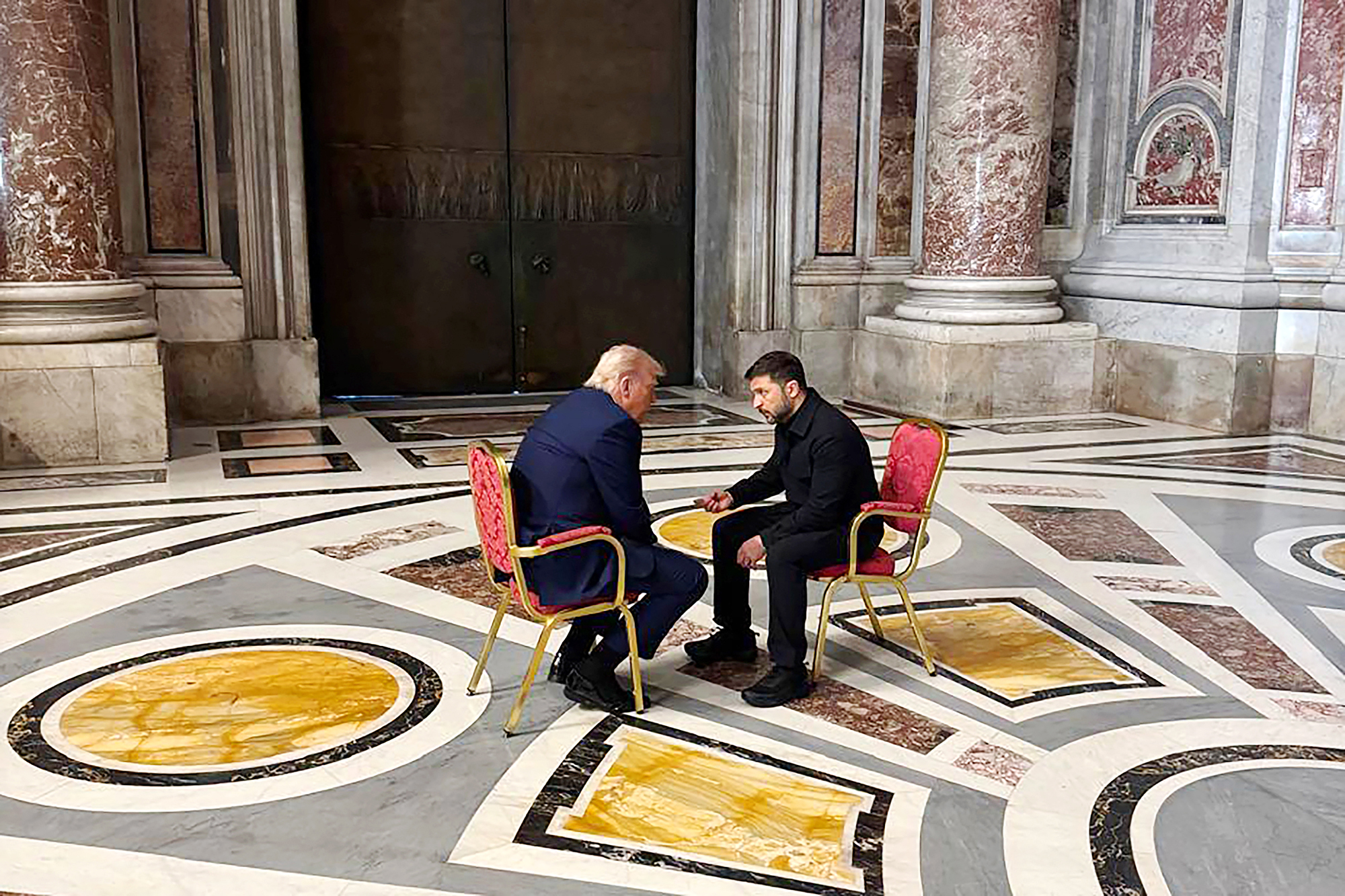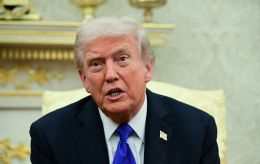100 days of chaos. How Trump is rewriting the rules for America and the world
 US President Donald Trump (photo: Getty Images)
US President Donald Trump (photo: Getty Images)
Read how US President Donald Trump created numerous new international problems without resolving any existing ones in the first hundred days of his presidency, and how it caused a drop in his popularity within the US.
Takeaways
- Why are the US attempts to end Russia’s war against Ukraine stalling?
- How did Trump crack relations with US allies?
- What are the consequences of Trump's trade wars?
- What difficulties has Trump faced within the US?
"I have solved more problems in the world without asking for or getting credit," said Donald Trump on April 25 in an interview with Time, dedicated to his first 100 days in office. He clearly meant his first presidential term. Even now he almost daily tells journalists how he knows how to solve problems and make deals. But, as a rule, he does not specify which global problems he has solved or is solving.
After all, the bare facts indicate the opposite – during his second term, Trump has not managed to resolve any major global crisis. Rather the opposite, in 100 days in office, Trump has instead created chaos where there had previously been relative order.
How Trump starts new wars
The president has already quarreled with US main allies and trading partners. The first to come under his blow were Mexico and Canada, which are part of the USMCA free trade zone with the US and have the largest positive trade balance with the US. Besides, illegal migrants head to the States through the Mexican and, to a lesser extent, Canadian border. Both, in Trump’s eyes, are more than sufficient reasons to count these neighbors among US enemies.
Meanwhile, trade negotiations continue. And they concern not only Mexico and Canada but most of the world. The day the trade war began was April 2 (which Trump called "Liberation Day"), when he signed an executive order imposing import tariffs against the European Union, China, and most Asian countries – even against Ukraine and the Pacific Islands – but not Russia. Yet just a week later, he announced a 90-day suspension of the tariffs.
According to him, over 75 countries approached US representatives to settle trade issues by making concessions to the US. In that same Time interview, Trump stunned journalists with a statement that he had already made 200 deals. When asked to name at least one, he began to talk about how the US keeps 50,000 soldiers in Germany.
But the only ones who dared to accept Trump’s tariff challenge were the Chinese – the country that is the US’s main competitor in the global economy. Trump began a frankly absurd tariff race, raising them to an unprecedented 145% on Chinese goods.

Donald Trump with a list of trade tariffs imposed against other countries (photo: Getty Images)
However, soon, under pressure from his advisors and market conditions, Trump retreated, making numerous exceptions for specific groups of goods. And he began talking about intensive negotiations with the Chinese to end the trade war. Yet, Beijing hadn’t heard of any such talks.
"Trump presents tariffs as a huge success and tries to retain the loyalty of his audience that way. So from his perspective, of course, this is a significant success. But objectively, I don’t see any super-radical breakthroughs at least for now," said Vladyslav Faraponov, head of the Institute of American Studies, to RBC-Ukraine.
Moreover, Trump’s actions had several consequences. First, his trade war pushed the entire world to the brink of a new economic crisis. On the first day tariffs were introduced, the key US stock index S&P 500 fell by 3.2%, and Nasdaq – by 4.1%. The World Trade Organization believes that the volume of goods trade between China and the US could shrink by 80% due to the new tariffs. And even if Trump is persuaded to end the tariff fever, restoring trust in the US as an unconditionally reliable economic partner will already be difficult.
Second, US relations were undermined even with its closest allies. Because trade tariffs were only one aspect of Trump’s policy toward US traditional allies. Even before the election, he declared that he would not defend NATO countries spending less than 2% of their GDP on defense.
US Vice President JD Vance shocked Europeans at the Munich Conference when he essentially explained to them in plain terms that Europe’s security is Europe’s own responsibility. So it is not surprising that, according to numerous American media reports, Trump is considering withdrawing US troops from Europe. Therefore, America’s European partners are already seriously discussing scenarios in which they would have to confront aggressive Russia alone. Especially since Trump’s relations with Putin have turned out to be, if not friendly, then at least not hostile.
How Trump does not end old wars
During the election campaign, Trump repeatedly stated his intentions to end the wars that began during Joe Biden’s term. Indeed, the activity of American diplomacy regarding Ukraine and Russia is noticeable. Trump’s calls with Ukrainian President Volodymyr Zelenskyy and Russian leader Vladimir Putin, several rounds of indirect negotiations in Saudi Arabia, and numerous trips by Trump’s representatives Keith Kellogg and Steve Witkoff have yielded results – but only according to Trump and his team’s own assessment.
US Secretary of State Marco Rubio said on April 27 that the prospects for any agreement to end the Russian-Ukrainian war are "closer than at any time in the past three years, but we’re still not there."
But practice shows that despite verbal agreements, even a temporary ceasefire is hard to implement due to Russia’s position. That was the case with the energy truce, which came into force on March 25. A similar story happened with the Easter truce on April 20. Even when Putin unilaterally declared a ceasefire, it was used to demonstrate Russia’s good intentions to Trump. In practice, however, shelling of Ukraine resumed within hours. The same goes for the new Kremlin narrative about a truce for May 9.
"The Trump administration has already made quite a lot of diplomatic and organizational efforts in terms of policy development. And that is a big problem for us because they think that 50–60% of the work is already done, that Russia is already about to agree, while we actually see a different picture. And that, accordingly, creates inflated expectations," Vladyslav Faraponov told RBC-Ukraine.
It seems that only by the hundredth day of his presidency, Trump is slowly beginning to realize the obvious for Ukraine and Europe – that the main obstacle to ending the Russian-Ukrainian war is Russia, not Ukraine.

Donald Trump and Volodymyr Zelenskyy during the meeting in the Vatican (photo: Getty Images)
Trump makes it clear that he absolutely does not care who controls, for example, Crimea or exactly where the line of demarcation in Donbas will run. As he constantly says, "I just want to make a deal." But a deal by definition requires the consent of all parties, including the aggressor country.
As Volodymyr Dubovyk, director of the Center for International Studies at Odesa National University, told RBC-Ukraine, Trump has not yet used all the leverage the US has to pressure Russia. There are several reasons why.
“One can’t say that his arsenal has many levers. But some, for increasing pressure on Russia, do exist. The biggest problem is that he does not want to support Ukraine and is very reluctant to apply pressure on Moscow, since establishing friendly relations with it is a priority for him,” Dubovyk said.
Among other things, US motivation is influenced by Russia’s potential to play into American interests beyond Ukraine. In the Middle East, Washington is conducting parallel negotiations on Iran’s nuclear program - an issue Trump created for himself during his first presidential term.
Back in 2015, the US and five other countries signed an agreement with Iran that provided for oversight of its nuclear program in exchange for the lifting of some sanctions. However, in 2018, Trump unilaterally withdrew the US from the agreement. Now he is trying to negotiate with Iran again. Notably, Russia is trying to use its ties with Iran to become a mediator for the US, likely in exchange for assistance in other areas, including Ukraine. Talks with Iran are currently ongoing, and it is unclear whether they will bear fruit.
What Trump’s potential actions in response to stalled negotiations might look like was illustrated in the Gaza Strip. Trump attempted to end the conflict between Israel and the Hamas group even before his inauguration. His envoy, Steven Witkoff, did indeed achieve a certain breakthrough in January, forcing both sides to compromise by limiting hostilities in exchange for the release of Israeli hostages.
But over time the deal hit a dead end. Hamas, realizing that the hostages were its only trump card, dragged out the process in every possible way. So, in mid-March, Trump gave Israel carte blanche for the physical elimination of militants. Low-intensity hostilities in the Gaza Strip continue to this day, and Trump rarely mentions them. Especially since he has many more interesting topics within the US.
Trump’s domestic problems
Traditionally, internal policy issues are the most important for American voters. And precisely in this area, Trump has been most active: from mass deportations of illegal migrants to restoring only two gender markers in official documents and even increasing water pressure in American showers. At the same time, Trump is conducting mass layoffs in the state apparatus. In his first 100 days, Trump signed a record number of executive orders — 140. For comparison, Biden signed about 40 in the same period, and Obama — 20.
But such activity does not always turn in his favor. According to a poll by ABC News, The Washington Post, and Ipsos, only 39% of Americans approve of Trump’s job performance. That’s 6% less than in February and is a record low for the first 100 days of a US president. Notably, the previous record low was also set by Trump during his first term.
Overall, nothing is surprising about a drop in the president’s ratings, as every post-election period brings societal polarization. But in Trump’s case, it is more intense than usual, over the extreme radicalism of the American president, Faraponov told RBC-Ukraine.
Trump also deliberately plays on the polarization of American society, constantly pitting himself against the previous Biden administration and the Democratic Party as a whole, in other words, against nearly half the American population.
Trump is also being undermined by the unrealistic nature of many of the promises he made before the election, says Volodymyr Dubovyk.
“Mainly, it’s tied to unrealistic expectations. Everyone projected something of their own onto Trump when they supported him in the election. Eventually, if problems with prices, access to medication and healthcare, etc., continue to accumulate, it will cause a sustained drop in his ratings,” the expert noted.
According to the expert, Trump can continue to be an influential president even with low ratings, since he also controls Congress, at least until the 2026 midterm elections.
Another source of internal problems for Trump is his team, selected primarily based on personal loyalty to the president. And that could not help but backfire on Trump. Among the prominent figures in his current circle are billionaire Elon Musk and Secretary of Defense Pete Hegseth, who generate scandals no less than Trump himself.
***
Even without any real achievements in 100 days, Trump has shown that he is determined to change both America and the world according to his vision of US national interests. According to his team, the White House has already prepared a plan for the next presidential 100-day period. Meanwhile, Trump himself has repeatedly shown how lightly he treats any deadlines or timelines. At first, the promise to end the Russia–Ukraine war turned out to be an “exaggeration,” and then just a “joke.”
Now a similar story is unfolding with the deadlines for signing a peace agreement. In case of its complete failure, the US threatens to exit from the process. Initially, Trump said such a deadline existed but later he denied its existence. According to the latest version, the deadline will be two weeks. Or less. Or a bit more, the American president clarified.
“I run the country and the world. I’m having a lot of fun, considering what I do. You know, what I do is such serious stuff,” Trump said in an interview with The Atlantic.

